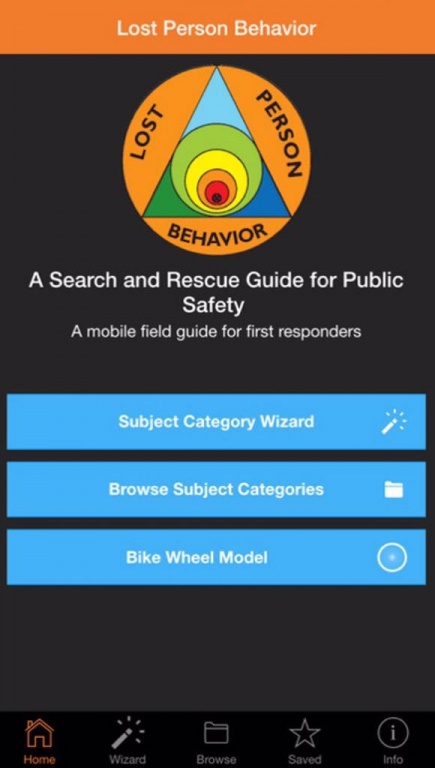When someone goes missing, the first few minutes and hours of the search are critical. A key to the success of search and rescue (SAR) teams is an aggressive, well-planned initial response. However, many times, first responders on scene in a missing person search don’t have the extensive training and development of initial search plans that specialized SAR teams have.
The Department of Homeland Security Science and Technology Directorate (S&T) First Responders Group recently released a mobile app, developed with the support of SAR teams around the nation, that provides step-by-step instructions on search plans for first responders and response teams. It provides search guidance, protocols and strategies used by SAR teams around the nation.
The Lost Person Behavior mobile app was released this spring and is available to download (for a fee) from Apple iTunes, Google Play and Amazon.com. Since its release, the app has received two-five star reviews from the APCO International Application Community and has been used in actual SAR operations in Virginia.
Using data from over 150,000 missing person cases across the country, the app provides guidance, tactical briefings, investigative questions, and statistics for over 40 different scenarios. These include lost hikers, hunters, children, missing vehicles, despondent individuals, dementia patients, and climbers. It also provides guidance for snow and water incidents.
“The Lost Person Behavior app is designed to provide a step-by-step checklist for first responders as well as everyday citizens involved in search and rescue efforts,” said program manager Christine Lee. “The app incorporated the feedback from SAR teams across the country for the development a comprehensive set of data, such as what questions to ask and what resources to use. It provides the knowledge obtained from experienced SAR teams into the hands of someone who may never have had any training at all.”
The app identifies high probability areas where an individual goes missing so searchers can initiate rapid response. It also breaks down the categories of lost people with related behavior profiles and provides a checklist of questions to ask friends and family of missing individuals. Using this data, the app uses the data to provide initial search locations and has filters for ecoregion and terrain.
The Lost Person Behavior app was developed under SBIR initiatives by dbs Productions, Charlottesville, Virginia.

